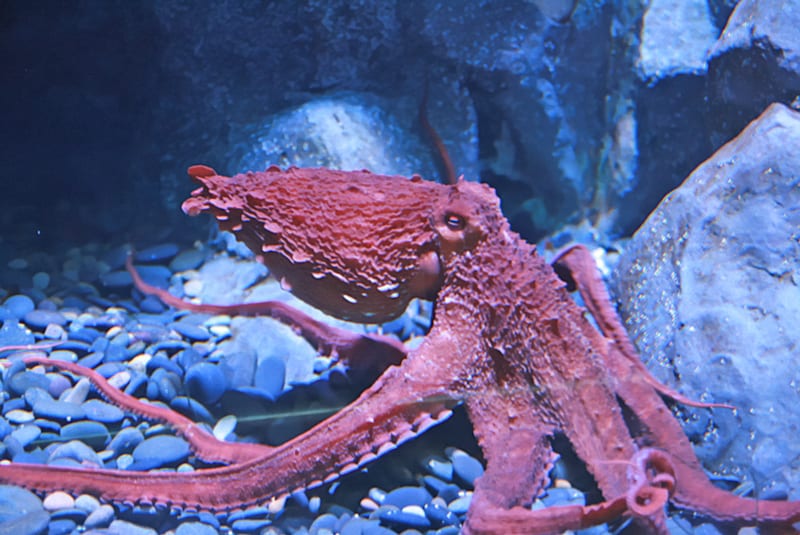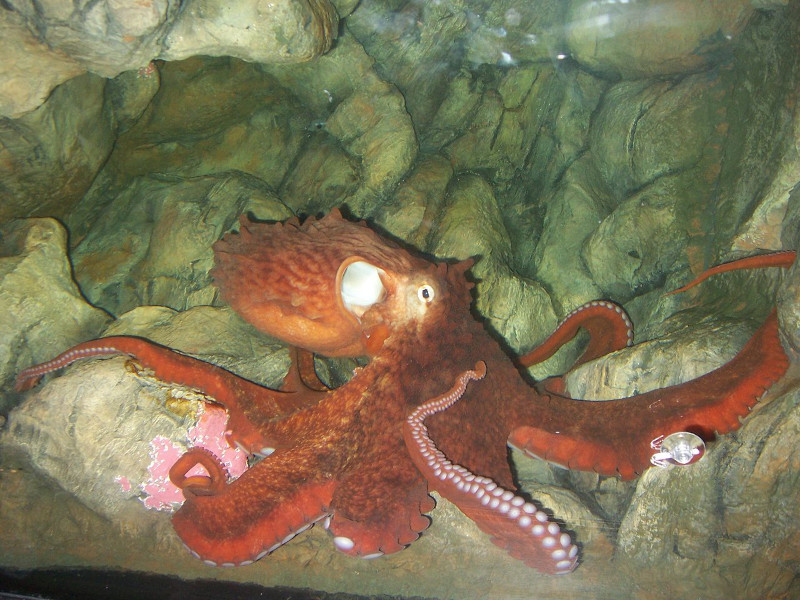North Pacific Giant Octopus Facts
- Most notably, the North Pacific Giant Octopus merits its name. That’s because its size makes it the largest known species of octopus. In addition, no other octopus species even comes close to rivaling it in size.
- The body of this incredible ocean species also displays extreme compactibility. As a result, it can compress its enormous body enough to squeeze through an opening the size of its own beak.
- While researchers rank all octopuses as the most intelligent of invertebrates, this species ranks among the most intelligent of all octopuses. Some can even disassemble complex lab equipment.
Related Articles
North Pacific Giant Octopus Physical Description
Its sheer size obviously ranks as the most noteworthy trait of the North Pacific Giant Octopus. Adults have an average arm span of 14 ft (4.3 m). However, exceptional individuals have achieved spans of as much as 20 ft (6 m).
Further, each of the eight tentacles contains two rows of suckers, and each of these has small hooks for gripping. Additionally, a web-like structure exists between the arms. This can be expanded into a parachute-like structure. This allows the octopus to more easily capture its prey and thrust it into the mouth.
Also, the mouth of this impressive animal appears in the center of the arms and contains a powerful beak and tongue. Individuals also have the remarkable ability to change their color at will, as camouflage.
- Kingdom: Animalia
- Phylum: Mollusca
- Class: Cephalopoda
- Order: Octopoda
- Family: Octopodidae
- Genus: Enteroctopus
- Species: E. dofleini
North Pacific Giant Octopus Distribution, Habitat, and Ecology
First of all, the North Pacific Giant Octopus has a unique habitat range. It extends laterally for a great distance, yet covers a small total area. This occurs because that range only entails coastal regions.
In North America, this includes Oregon, California, Washington, and Alaska, in the United States. It also lives in the ocean near British Columbia, in Canada. But, it also appears in the waters near Russia, northern Japan, and Korea.
The species also inhabits a depth range extending from the intertidal zone to depths of as much as 6,600 ft (2,000 m). Given this range, its diet also typically includes crabs, shrimp, abalone, scallops, lobsters, clams, and fish.
Further, its own predators remain limited and primarily include sea otters, harbor seals, and sperm whales. It also has a rather long lifespan in comparison with other octopuses, living an average of 4-5 years.
Finally, it breeds prolifically, with the female laying as many as 400,000 eggs in their brief lifetime. This provides it with an extraordinary advantage for the survival of the species, compared to other species.
Species Sharing Its Range
Check out our other articles on 7 Stunning European Flowering Plants, Boomslang, Lake Toba, Amethyst Deceiver, Pangolin, Rosy Maple Moth, Bald Eagle, Mountain Chicken, Weedy Seadragon


